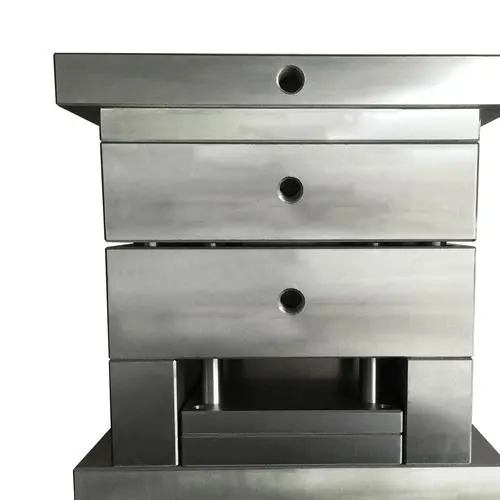Common Applications of Copper Plates in Manufacturing
Copper plates are essential components in various manufacturing processes due to their unique physical properties, including excellent electrical conductivity, high thermal conductivity, and corrosion resistance. In this article, we will explore the common applications of copper plates in manufacturing, particularly in the context of industries relevant to Saudi Arabia.
1. Electrical Components Manufacturing
Copper plates are widely used in the production of electrical components. Given their high electrical conductivity, copper plates are an ideal choice for creating wiring systems, connectors, and terminals. The automotive and electronics industries, which are growing rapidly in Saudi Arabia, rely heavily on copper for effective current transmission.
In the manufacture of circuit boards, copper plates are utilized to create conductive pathways for electrical signals. The fabrication process, known as etching, involves removing unwanted copper to leave behind the desired circuit design. This application is crucial for ensuring the functionality and reliability of electronic devices, which are increasingly prevalent in the Saudi market. As such, manufacturers are continually seeking high-quality copper plates to maintain the performance standards required in modern electronics.
2. Heat Exchangers
Heat exchangers are vital components in various industries, including petrochemical, HVAC, and power generation. Copper plates are favored for their excellent thermal conductivity, allowing for efficient heat transfer between fluids. The use of copper in heat exchangers helps to improve energy efficiency and reduce operational costs.
In Saudi Arabia, where temperature extremes can impact operational efficiency, manufacturers are increasingly investing in advanced heat exchanger technologies that incorporate copper plates. These plates enhance the performance and efficiency of systems used in oil and gas processing, air conditioning, and refrigeration. Furthermore, the corrosion resistance of copper ensures longevity and reliability in the demanding environments typical of these applications.
3. Architectural Applications
Copper plates have a long-standing history in architecture, primarily used for roofing, cladding, and decorative elements. Their durability and aesthetic appeal make them a preferred material for modern architectural designs. In Saudi Arabia's expanding urban landscape, many new buildings are incorporating copper as a key design element.
The patina that develops on copper surfaces over time adds a unique visual character to structures, making them stand out. Additionally, copper's longevity reduces the need for frequent maintenance and replacement, which is a significant advantage in the harsh Saudi climate. As architects and builders seek sustainable and visually appealing materials, copper plates are increasingly being specified in construction projects across the region.
4. Industrial Equipment and Machinery
Copper plates are commonly utilized in the manufacturing of various industrial equipment and machinery. Their strength and resistance to wear and tear make them suitable for components in high-stress environments. Industries such as mining, construction, and manufacturing often incorporate copper plates into machinery components where durability and reliability are critical.
In addition to structural applications, copper plates are used for heat sinks, which dissipate heat generated by machinery during operation. Given the rigorous operating conditions typical in Saudi Arabia's industrial sector, the use of copper in equipment production ensures that machines maintain optimal performance while minimizing downtime. These applications illustrate the versatility and importance of copper in supporting the industry’s growth and sustainability.
5. Renewable Energy Sector
The renewable energy sector is gaining traction globally, and Saudi Arabia is no exception. As the country invests in solar and wind energy projects, copper plates are becoming increasingly crucial in the production of energy systems. They are used in solar panels, wind turbines, and electrical connections due to their exceptional conductivity and durability.
In solar technology, copper plates enhance the efficiency of photovoltaic systems, enabling better performance and higher energy output. The wind energy sector benefits from copper's reliability in electrical components, ensuring that energy conversion processes are efficient and effective. As Saudi Arabia expands its efforts towards renewable energy, the demand for copper plates in this sector is expected to rise significantly.
6. Chemical Processing
Copper's corrosion resistance makes it an ideal material for chemical processing applications. Copper plates are often used in storage tanks, piping, and valves within chemical manufacturing facilities. They are capable of handling various corrosive substances, ensuring that production processes remain safe and efficient.
In the context of Saudi Arabia's oil and gas industry, copper is critical in refining and processing operations. The ability of copper plates to withstand harsh chemicals means they can be employed in systems where traditional materials may fail. This application not only enhances safety but also increases the operational lifespan of equipment used in the chemical industry.
7. Art and Craftsmanship
Copper plates are also popular in artistic endeavors, particularly in handcrafted items, sculptures, and bespoke architectural elements. The malleability of copper allows artisans to create intricate designs, while its natural beauty enhances artistic projects. In Saudi Arabia, where craftsmanship is highly valued, copper is often favored by artists for its versatility.
Workshops and studios across the country are increasingly utilizing copper plates to create unique items that reflect local culture and heritage. As artisans and designers explore the aesthetic potential of copper, the demand for high-quality copper plates continues to grow. This trend contributes to the preservation of traditional craftsmanship while also promoting contemporary design innovations.
8. Conclusion
In summary, copper plates play a crucial role in various manufacturing applications, including electrical components, heat exchangers, architectural designs, industrial machinery, renewable energy systems, chemical processing, and artistic endeavors. As Saudi Arabia continues to develop its economy and infrastructure, the importance of copper plates will only increase. Industries must recognize the value of copper as a material that offers durability, efficiency, and aesthetic appeal.
Manufacturers and businesses in Saudi Arabia should invest in high-quality copper plates that meet their specific needs. By selecting the right materials, companies can enhance their operations, ensure safety, and contribute to sustainable development in the region. Copper plates are not just materials; they are essential solvents to the growing demands of manufacturing in Saudi Arabia.

